By Devika Girish in the May-June 2020 Issue
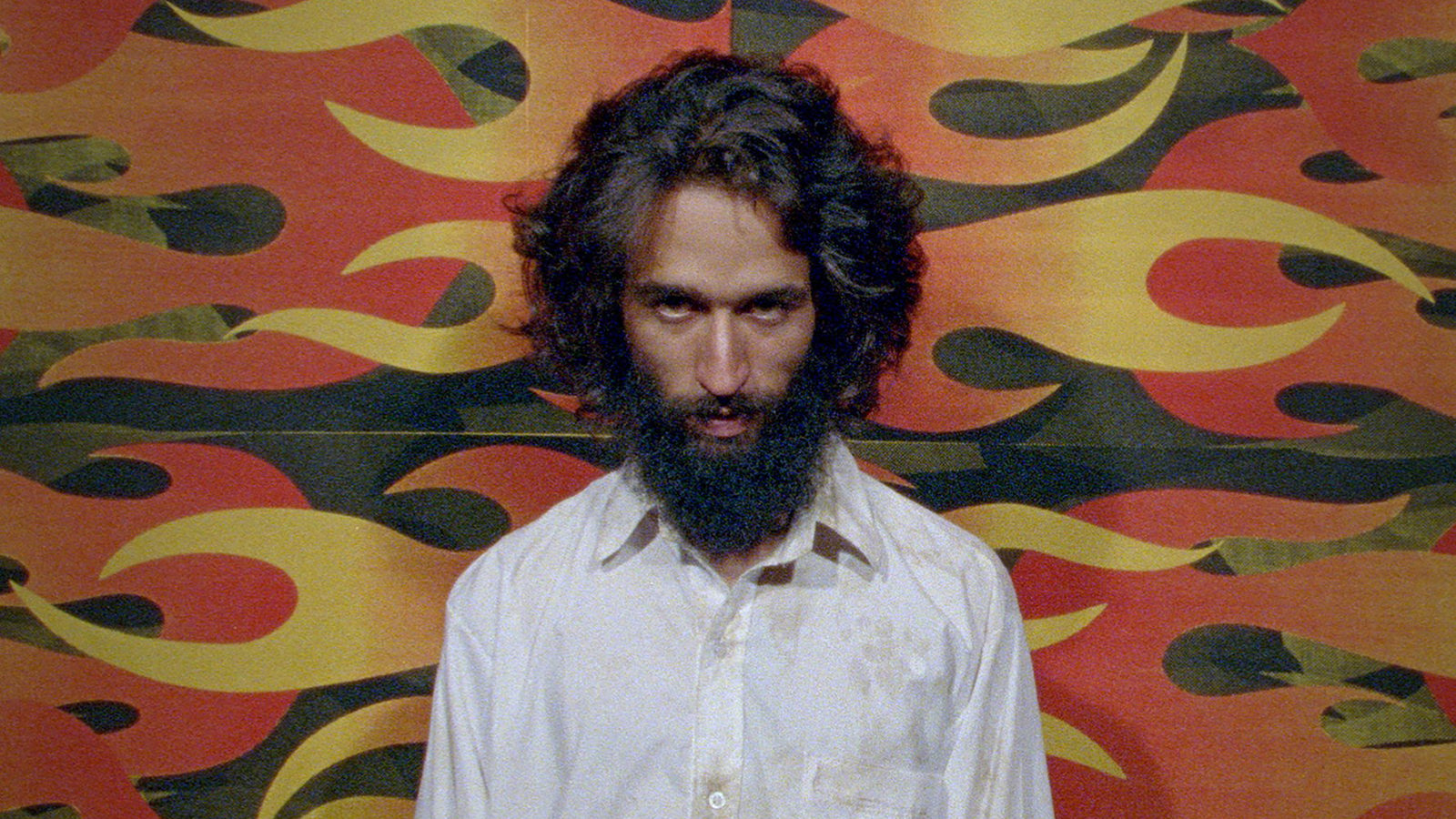
Can Dialectics Break Bricks?
Colombian filmmaker Camilo Restrepo’s debut feature Los Conductos burns white-hot with the misterioso story of an outlaw at large
What if we left their contents aside and examined their physical qualities (paper, ink, weight, etc.)?” Camilo Restrepo says in his 2015 documentary short, Impression of a War, as the camera zooms into the warped, oversaturated pages of discarded Colombian newspapers. “Would it be possible to get an idea of the true life of this country? An altered idea, granted, but perhaps an eloquent one?”
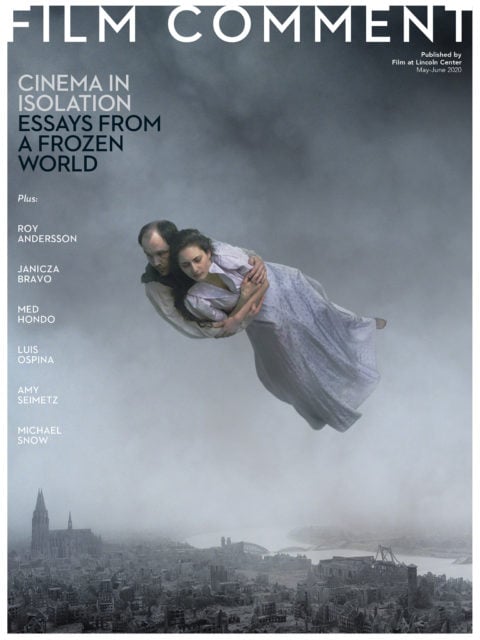
From the May-June 2020 Issue
Also in this issue
The question seems to guide the Colombian filmmaker’s decade-spanning oeuvre: a collection of five resplendent, form-bending shorts that are united by their fascination with physical film as an index—imprinted with the time and place of its making. Shot on dense, flickering Super 8 and 16mm film—developed by Restrepo himself at L’Abominable, an artist-run laboratory in Paris—his shorts extend this notion of indexicality to every object of his camera; they peer into the thingness of things, looking for the colloquial histories inscribed in surfaces and bodies. In 2011’s Tropic Pocket, images of feet and then a Chevrolet car crushing through the thicket of a jungle weave together in a found-footage collage of colonial encounters. Impression of a War seeks the legacy of the Colombian armed conflict in its vernacular traces—a former combatant’s Biblical tattoo, graffiti scribbled on walls by torture victims. In Like Shadows Growing as the Sun Goes Down (2014), impoverished, hustling young workers slice rubber tires and cut open vivid green watermelon on the sunny streets of Medellín, Colombia. Restrepo’s recent shorts, Cilaos (2016) and La Bouche (2017), shift into more narrative and musical territory—drawing respectively on Guinean drumming and Maloyan chanting traditions—but their intangible sonic rhythms also arise from scenes of tactility. Intertitles, dialogue, and voiceover complement the granular focus of these works with eloquent poetic and political ruminations, making them feel both immediate and elusive, sensory and cerebral.
Restrepo’s first feature, which premiered in the Encounters section of the Berlinale this year, extends these preoccupations into new realms of story, genre, and performance. The trim, 70-minute Los Conductos is “freely inspired by” the life of its lead actor, Luis Felipe “Pinky” Lozano (also seen briefly in Like Shadows Growing as the Sun Goes Down). Having escaped from a violent religious sect a few years ago, Lozano plays a gun-toting version of himself here, grappling with a complex relation to revenge and morality. Like its predecessors, Los Conductos is a film made up of textures—faces framed within precise modulations of light and shadow, the grit of Medellín’s urban environment alchemized ethereally onto 16mm film grain—but it also allows Restrepo to flex his remarkable knack for world-building. Devised partly as an opportunity for Pinky to exorcise his demons in the refuge of movie make-believe, Los Conductos combines a rigorous sense of material and mental space with a capacious and ever-mutating universe of ideas and references. The director draws on his own, his actor’s, and his nation’s memories; literary texts by Gonzalo Arango and Luis Vélez de Guevara; and other elements of pop media, folding them into a work that shifts idiosyncratically between noir, docufiction, and Lynchian surrealism. In addition, recurring acts of duplication and consumption, of objects as well as images, contemplate both the endless reproduction of violence in Colombia and the violence of endless reproduction.
I spoke to Restrepo in Berlin a few days before Los Conductos won the festival’s Best First Feature Award.
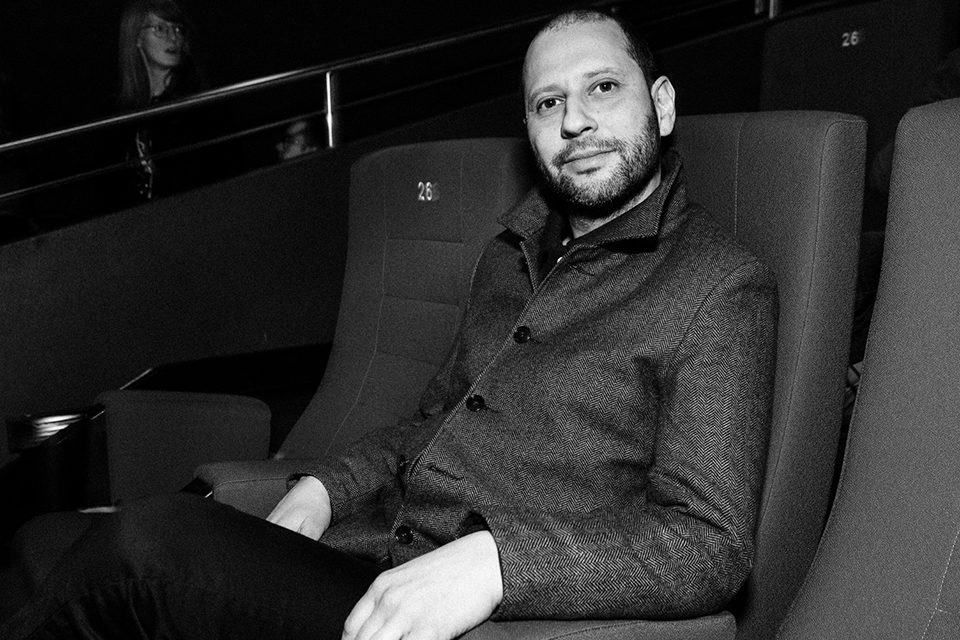
Camilo Restrepo (Courtesy of the Berlin International Film Festival)
When did you meet Pinky first, and how did you develop the story of Los Conductos with him?
I met Pinky in 2014. I was shooting Like Shadows Growing as the Sun Goes Down with my sister at that time, about a group of young people, marginal youths, trying to find money in the streets of Medellín, Colombia, by juggling and other such activities. Pinky was one of these people. Then in 2015, I went back to Colombia to shoot another film, and Pinky had no job at the time. So I asked him to become my assistant and taught him some technical stuff. He told me that he was previously involved in a religious sect under the influence of a man called “the Father.” He was pushed to act in violent ways in the name of God. So he was kind of lost about what was good and bad. But one day he had [a moment of] enlightenment and understood that he was being manipulated against his own faith. So he escaped.
He said that he had one mission in life: to kill the Father, because that was an act of good that could save the other young people in the sect. I understood that he was going to do the same things he did when he was in the sect. So I said to him, “No problem, let’s kill the Father. I’m going to help you. But we’re going to do it in a film. The starting point is you shooting the guy and then we have to figure out what else can we do in the film. The killing is already done, so how are you going to reintegrate into society now?” So it was not only the idea of representing these events from Pinky’s life, but also of creating a portrait of his mind, of a youth living in the margins of society.
You quote several other texts in the film: The Lame Devil by Luis Vélez de Guevara, Gonzalo Arango’s poem “Elegía a Desquite,” and the story of Baby and Nut, clown characters from an old TV show. How did all these elements come together with Pinky’s story?
In the beginning, it’s Pinky’s story, and at the end, there’s a poem about a bandit in Colombia from the ’50s, known as Revenge (“Desquite”). In the poem, Gonzalo Arango says that if Colombia is unable to create a future for its sons, then Revenge is going to come back and there will be blood everywhere. Colombia has not yet built the possibility for these children to live in a society that can integrate them. So I thought it was time to bring back Revenge as this prophecy. Revenge was like a Robin Hood: in a period where there were no guerillas, he was a kind of proto-guerilla. He was someone who understood that the world was not fair, and that justice was difficult for the poor, for the marginal. For him, there was no other way to win this justice than to hold a gun. And on his gun, he had inscribed, “This is my life.” This was similar to Pinky, for whom justice was killing the Father. People thought Revenge was a good bad guy.
Like a vigilante.
Yeah, and afterward, he became a very bad bad guy. But the problem was that Pinky didn’t know the limit between good and bad. So I needed another character, who knew those limits. And this character came from literature, The Lame Devil, a work of satire. It’s a story about the first rebel angel, who falls to the earth and breaks his leg. Then a young man who has done something wrong and is running from the police comes and frees the Devil from his prison. In return, the Devil takes the man up to the clouds and opens the roofs of all the houses in the city and shows him the theater of real life, its hypocrisy. And then the man understands that being up there is only possible for God or the Devil, and now that he has this position, he cannot go back to reality, to society. Being in reality means not having the whole vision of things—we have to act without knowing, and by choosing.
And then I have the clowns, who are from television—so, from a vision that’s far away. They were on TV when I was a child, and they would go around measuring potholes in the streets as a kind of satire, because at the time there were a lot of rumors about municipal corruption. One of the actors, when he was very young, fell into drugs and was stabbed by a dealer. And his father said to the doctors, “His life isn’t worth anything. He’s just a nobody. He doesn’t deserve to live.” But he survived and said, “I saw God, and this is my new mission. I have to stop drugs.” Pinky also had a problem with drugs, and there was this link of the father and the son. The characters are like mirrors. At some point Pinky is not Pinky anymore.
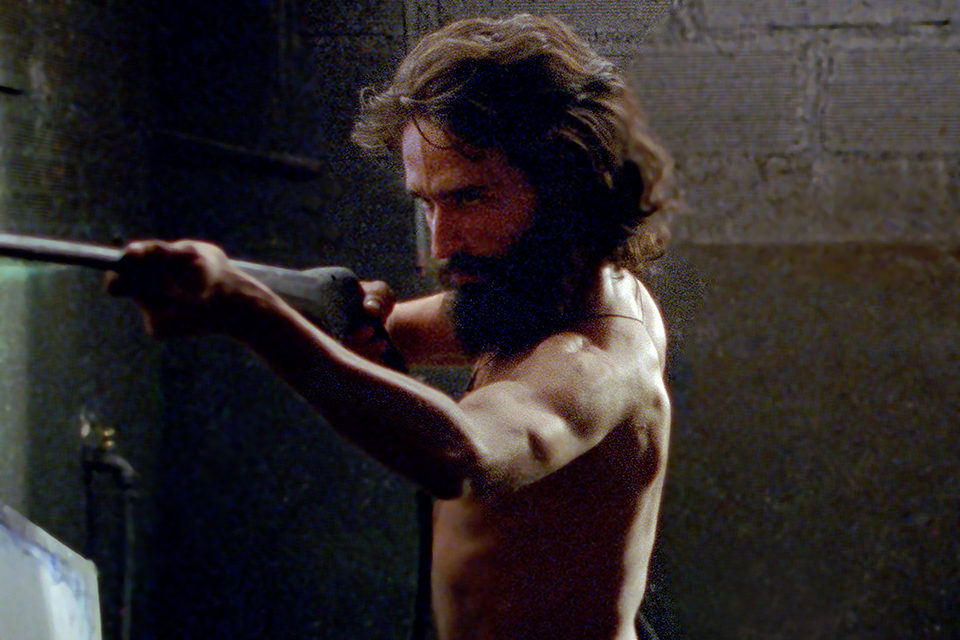
Los Conductos (Courtesy of Grasshopper Film)
Did Pinky have a specific kind of response to authority because of his past?
Yes, but not against authority. It’s normal to imagine that he wanted to be a rebel, because his life was about submission for a long time. And I am a kind of a father, as the director of a film. But I don’t deal in authority. Directing is like conducting an orchestra. You have your team and crew, and you have to conduct them all to more or less sing the same song, at the same time, at the same rate. I have to make decisions at the right moment. With Pinky, it was like: “You’re the lead voice. Now you’re going to sing. Then stop and continue with another melody.” That was probably a problem for him. He wants so badly to be good that he immediately follows someone that he trusts. And sometimes he was following me a little too much. I was really becoming a father.
Did you have to give him more distance or control sometimes?
Of course, because the idea was: you’re going to represent yourself in the film, because I want you to represent yourself in real life. Construct yourself.
There’s a strong sense of tactility in all your films. Does that come from your background in painting and visual art?
Yes, of course. Because I shoot in 16mm, and I also developed my earlier films myself—though not this one, because it was too long. There’s a handicraft aspect to it. It’s more like being an artisan than an artist. There’s this thing of making images with concrete objects, with materiality. I don’t write a script, I make a collage of images, words, quotations from books, and then I have this audiovisual form which I’m constructing. So I deal with things, not ideas. Like artists, who cut and paste materials. If you want to [give form to] a material, you have to fight with it.
There’s a recurring idea in Los Conductos that we’re accessing reality through reproductions of it. One of my favorite images is the room lined with sheets of cloth that have flames painted on them. There’s also Pinky’s job at the T-shirt factory, where he’s screen-printing fake Adidas merchandise.
Duplication is the main theme of the film. You have reality and the fake. You have the real Adidas and the fake Adidas. So you have good capitalism and bad capitalism. You have this industry against another industry, which is also at the margins. Then there’s another idea of capitalism, which is the capitalism of the image. I don’t want to talk too much about the real consumption of merchandise, because I have to deal with images. And we’re in a bulimic world, consuming images the whole time, moving images at a high speed; we don’t even know why. We’re reproducing ourselves constantly. So, what I wanted to tell Pinky was: “Okay, you’re going to represent yourself; you’re going to be your own image. But being an image is not being you. And you have to be aware of that. You have to know that killing the Father here is not going to kill him in real life.”
And there was something that you pointed out, with the fire and the representation of fire. I created [those pieces of cloth]. Because I was thinking about this Lame Devil story, and there were T-shirts in the film, and I saw how workers at the T-shirt factory were printing fabric. It was like a representation of work. And I thought: I can create hell with nothing, like a theater of hell.
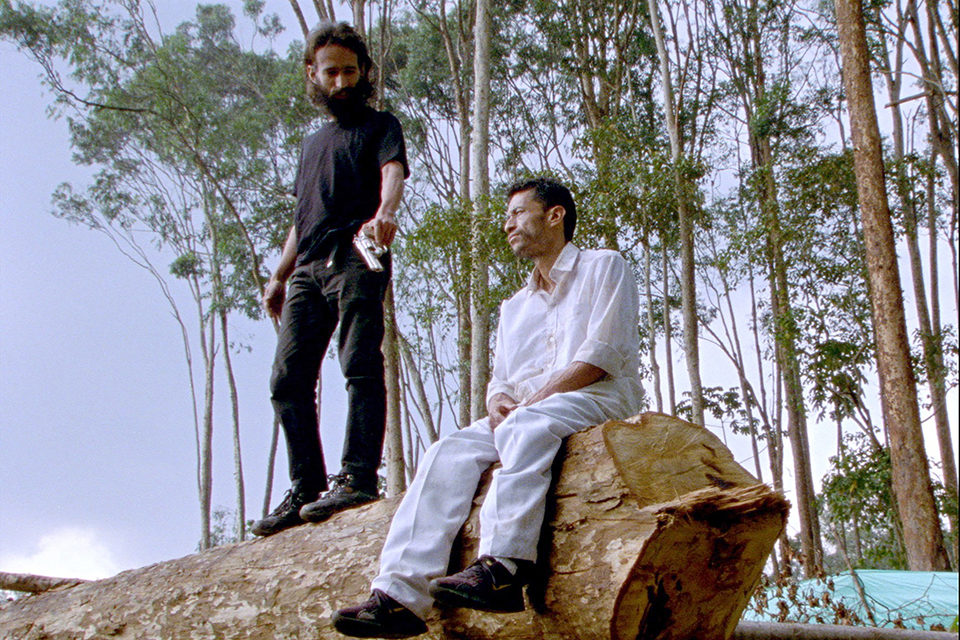
Los Conductos (Courtesy of Grasshopper Film)
In the press notes for Los Conductos, you said, “I wanted to reject the rapport between realism and truth to which we have become accustomed. There seems to be a tendency in modern world cinema to highlight the evils afflicting emerging countries through a tragic form of realism.” How filmic images circulate economically and culturally in the world seems to be a central concern of yours—one can see it in your first film, Tropic Pocket.
That is linked to my ambition to shoot on celluloid and 16mm. Because I want an image that is not an image of the present. It’s not the image of the film industry—it’s another image. I want to take some distance. I’m not making news; I’m not going to tell you how Colombia is.
It’s not ethnographic.
It’s not going to be ethnographic. It’s not going to be a documentary. It’s not going to be like TV. You’re not going to end this film feeling “Oh, I learned a lot of things,” no. I think it’s very funny: I film a lot of television sets in my movies. But they are filmed on celluloid. It’s like making a transcription of TV.
In La Bouche and Cilaos, oral and musical performance traditions give structure to the films. That’s not the case in Los Conductos, but it still feels like the pace of the film is determined by sound, by rhythm.
There are two things that I’m continuously looking for: voice and sound. In my very first film, Tropic Pocket, the first minute is silent. I had nothing to put inside it. Then there are sounds arriving, but there’s no voice, because I didn’t know how to announce what I wanted. Then in Impressions of a War, I understood that I needed my voice. I’m going to tell you my feelings about things, my own impressions, and I said, okay, it has to be in my voice. In Cilaos and La Bouche, it had to be another voice, but not a normal voiceover. It had to be singing. And that was going to be the storytelling.
This new film, I shot it mute, without sound. We went to Colombia and we only took our cameras. We constructed the sound afterwards.
Oh, so no sync sound?
No. Because sound is a construction. It’s not the… how do you say it? It’s not the little brother of images. A lot of people use sound like that, and it’s awful. If you see sound as independent, then you have a lot of possibilities.
Every frame of your film is gorgeous, even when the screen is mostly dark. Is it important for you to create beautiful images?
No, for me, what is important is that there is a sensuality coming from the materials, and then emotion is going to come from that sensuality. I don’t want psychological emotion in my films, because with that, we go into mimesis and representation, into the identification of the viewer with the character. And that’s absolutely what I want to avoid. I also need emotion, I want emotion, I love emotion. But in my films, it’s coming from the materials, from sensuality. I want to use images against representation or against mimesis, and give them the freedom to be as they are.
Devika Girish is the Assistant Editor at Film Comment.







